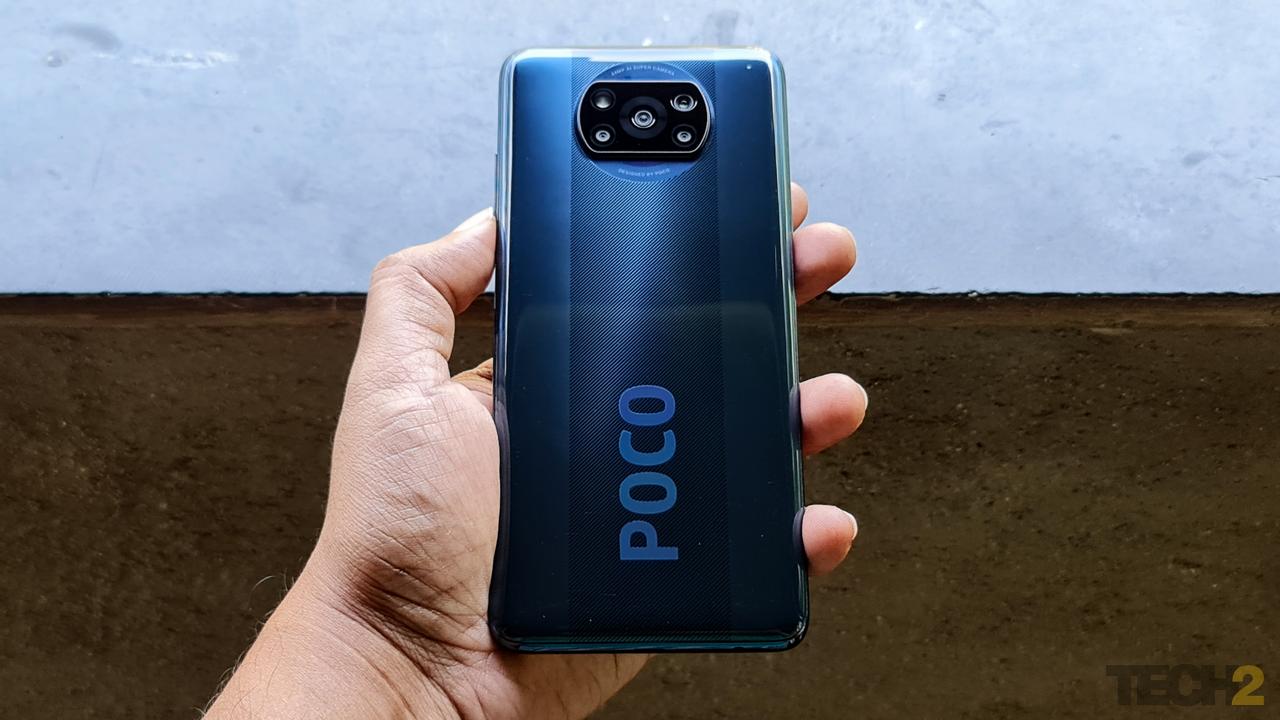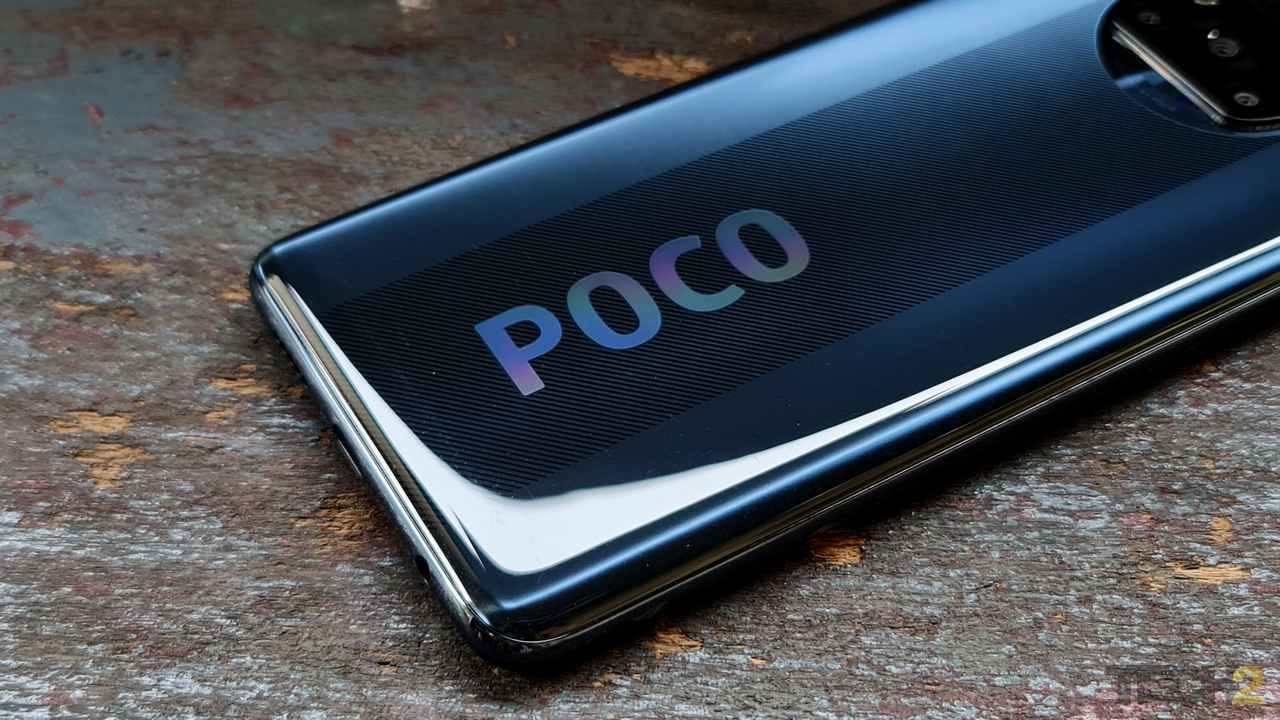A crazy-good budget gaming smartphone that will also appeal to regular buyers- Tech Reviews, DD FreedishNews
Even if you aren’t familiar with the Poco X2, you must have come across it in buying guides, or in many of our reviews. This is because it offers plenty of hardware for your buck, making it good value for money.
At Rs 17,499, the Poco X2 is a proper budget gaming smartphone. It focussed on delivering just one thing — performance. And this made it more of a gaming smartphone than anything else.
With the Poco X3, things have been improved. I received the 8GB RAM + 128 GB storage variant in the ‘Shadow Black’ finish of the Poco X3 for review. And after using it for more than a week, it’s easy to conclude that it still is an excellent budget gaming smartphone.
But thanks to the improvements with the battery, speakers and build quality, it now also appeals to regular budget smartphone buyers who may not be interested in gaming with it.

Poco X3. Image: Sheldon Pinto
What makes it an excellent gaming smartphone?
Table of Contents
Gorgeous 120Hz display
Considering that this is a budget smartphone, the 6.67-inch FHD+ hole-punch display is really impressive. The whitepoint is as good as it gets, and the colours are way better than what you get on most smartphone displays in this price range. The reds look, well, red and orange… like orange should. It’s also quite bright and can tackle a sunny day quite nicely.
The IPS LCD display also features a 120 Hz refresh rate. This translates to a smoother, fluid smartphone experience. And it’s not just evident when gaming, but more in day-to-day use when interacting with the MIUI software.

The IPS LCD display also features a 120 Hz refresh rate. Image: Sheldon Pinto
The 240Hz touch sampling rate (or touch sensitivity) is spot-on and can detect the slightest shift of your finger sliding across the display. Indeed, this is of better use when gaming. More on this in a few paragraphs.
There is, however, a slight ghosting issue. This happens when the pixels on the display can’t keep up (or refresh fast enough) with the refresh rate of the display. But you will mostly notice this only when scrolling through spaced out text over a white background like in Chrome, the Settings app or the Contacts app. Some may find this effect a bit irritating, but most others may not even notice it. I noticed it because I’m used to ultra-premium (upwards of Rs 1 lakh) devices with 120Hz OLED panels.
The effect is quite minimal and did not annoy me all that much, both in daily use and when gaming, because the overall fluidity of the experience did not seem to be affected by it.
Solid gaming performance
The Poco X3 is the first smartphone to be launched in India and globally (as the Poco X3 NFC) with a Qualcomm Snapdragon 732G chipset. It brings along with it some ‘Elite Gaming’ features like HDR visuals, game jank reducer and more. The GPU performance has also been upped by 15 percent over the older 730G chipset, and it all shows when you fire up a game.
I tried out Call of Duty: Mobile, Asphalt 9 Legends, Dead Trigger 2, Shadowgun Legends, Mudrunner, Real Racing 3 and Offroad Legends 2. All of them worked at the highest settings possible without a hiccup, hitting frame rates between the 60 fps to 110fps or higher (as per readings from the built-in Game Turbo app). What’s more impressive, is that the phone did not heat up no matter what I threw at it and no matter how long I gamed on it. Indeed, this phone is built from scratch for gaming and it shows!
The 240Hz touch sampling rate (or sensitivity) is no gimmick either, and it works like it does on a premium flagship smartphone. It really gives you an edge in FPS games.

The Poco X3 is the first smartphone to be launched in India and globally (as the Poco X3 NFC) with a Snapdragon 732G chipset. Image: Sheldon Pinto
Poco’s Game Turbo app is also quite useful and lets you adjust the touch response, reduce touch sensitivity around the corners and increase contrast. These can be adjusted individually for each game as well.
Good vibrations!
No, I’m not talking about the haptic motor, but the speakers!

At times, it did feel like the mids were a bit low, but the overall audio performance is top-notch. Image: Sheldon Pinto
The dual stereo speaker setup is not just loud, but also vibrates the back panel of the smartphone, so you can feel every bullet leaving the M16 assault rifle in COD: Mobile. At times, it did feel like the mids were a bit low, but the overall audio performance is top notch.
The speakers really make the gaming experience quite immersive, giving you the feels of holding a proper console gamepad. You do get a 3.5 mm headphone jack, but I honestly never needed to use it, because the speakers are that good.
What makes it a good budget smartphone?
Great build quality
For once you do get an IP53 rating, even if it’s just protection against minor splashes. The design looks slick and polished from every angle possible.

For once you do get an IP53 rating, even if it’s just protection against minor splashes. Image: Sheldon Pinto
The rear camera layout may remind you of those robot drones from the movie Oblivion, but it did not feel out of place in the ‘Shadow Gray’ variant I received for review. The back is dual textured and has this cool-looking iridescent glow that’s visible at every angle. The Poco branding at the back is bold, but not distracting or in your face, and shines with a subtle rainbow effect when viewed at an angle.

The back is dual textured and has this cool-looking iridescent glow that’s visible at every angle. Image: Sheldon Pinto
Lending that premium feel at a not so premium price tag is the 3D curved layered polycarbonate back. It curves around every side and blends seamlessly with the rounded polycarbonate frame.

The shadowy, sinister look screams gaming, but it also looks good enough to appeal to regular buyers. Image: Tech2/Sheldon Pinto
Being made out of polycarbonate, it is susceptible to scratches, but it will not break easily like glass. The back is also a fingerprint magnet, but the smudges can be wiped off easily. The shadowy, sinister look screams gaming, but it also looks good enough to appeal to regular buyers.
It’s a good enough camera
As per Nimish’s review of the Poco X2, it was a decent performer for a budget smartphone, but the X3 takes things up a notch. Part of the reason for this is the choice of a 64 MP Sony IMX682 primary sensor that uses bigger pixels and a bigger sensor size as well.

The 13 MP ultra-wide camera lets you squeeze a lot more into a scene. Image: Tech2/Sheldon Pinto
The binned 12 MP photos shot in daylight come out quite nice and sharp. Colours are in control and not oversaturated like most smartphones in this price segment. The HDR system works great with the highlights, but for some reason, shadows appear crushed even in photos shot in bright daylight.
The autofocus system works as expected, but will start hunting if a scene gets too dark, which is pretty much a standard issue with smartphones in this segment.
The 13 MP ultra-wide camera lets you squeeze a lot more into a scene. While the dynamic range is decent, details are on the lower side even when shooting in broad daylight. The 2 MP macro camera gets you decent close-ups provided there’s enough light around and you can hold the phone steady in the fixed focus range. I would have definitely preferred the 5 MP unit from the M2 Pro on the X3. You can’t have everything!
The camera does struggle in low light. There’s noise and blotched textures along with blown-out street lights. Switching to ‘Night’ mode helps by adding some definition to the objects in the scene, but that only works provided there’s a source of light nearby.

It features a front-facing 20 MP camera. Image: Sheldon Pinto
Portrait photos come out sharp and with good dynamic range. Selfies that were a sore spot on the X2 look leagues better, despite going with a single front-facing 20 MP camera this time.
1080p 30fps recording looks quite smooth, stabilised and showcases a good amount of detail. The 1080p 60fps footage, strangely, saw some focus hopping even in a daylight scene.
Upon closely examining the video, it turned out that it’s not actually a case of hopping, but the phone takes an extra millisecond to lock focus once you have panned. This mode could really do with a software update.
4K 30fps footage does show purple fringing around the darker spots, and the bitrate also seems a bit low even though the details are okay. In low light, all modes take a hit with detail. The 1080p 30fps footage was its best foot forward with a decent amount of detail and tolerable noise levels.
MIUI 12 with no ads
Yes. For once, you don’t get fed with ads on a Xiaomi smartphone! But there is a nagging ‘Get Apps’ app, that will pester you to update installed native and third-party apps at least once in a day. If you don’t want them, simply switch them off in the Notifications settings.
As for the user interface, I did notice a few random stutters from time to time, but it did not ruin the 120hz experience for me. You need to keep in mind that this is MIUI 12, which is a major milestone update for Xiaomi. It has only recently been released for most Xiaomi, Redmi and Poco smartphones, so I’m guessing that future updates will solve these minor hiccups. And from what I know, there are some software updates on the way.

This, being a Poco smartphone, runs the Poco launcher, so you get an app drawer and a very stock Android-like theme. Image: Sheldon Pinto
You literally get everything you would expect from the MIUI 12 experience (if you are a fan of it). The ‘Super Wallpapers’ are missing in action, but from what I learnt after a quick search online, these are usually reserved for Xiaomi’s premium smartphones only.
This, being a Poco smartphone, runs the Poco launcher, so you get an app drawer and a very stock Android-like theme. The design refresh is a welcome change (even though it’s a bit iOS-like in places) and you get sprinkles of animations and transitions everywhere. And they all look good on that fluid 120 Hz display.
Quality haptic motor
Given that this is a smartphone priced from Rs 16,999, the haptics are fantastic. The Z-axis linear motor is flagship-level stuff, and it all works nicely with MIUI, giving you accurate bumps, nudges and minute vibrations in the oddest of places in the OS. Indeed, it feels like Poco has paid a lot of attention to the software experience on the X3.
6,000 mAh battery
While Samsung is currently leading the pack with a 7,000 mAh battery inside the Galaxy M51, Poco is not too far behind with the inclusion of a 6,000 mAh battery on the X3. There’s a 33 W charger like on the Redmi Note 9 Pro Max, but it’s charging a battery with a higher capacity, so things are a bit slower. It can still charge that 6,000 mAh battery from 0-100 percent in about 1 hour and 30 minutes, so it’s no slouch!
And once the battery has its fill, it can keep the phone alive for quite a while.
I ran the phone in the adaptive 120 Hz screen refresh rate mode during the review period. It’s not a constant 120 Hz, and varies by usage and apps, but I prefer its fluidity over the regular 60 Hz refresh rate. With casual use and about an hour of gaming, I easily managed two whole days of use. With constant gaming for two to three hours, it came down to a full day of use with about 10-20 percent left. And given the size of this battery, that’s still good enough for several calls, messages and photos, before the battery dies out.
A damn good streaming machine
Poco promises HDR 10 support while streaming video. While YouTube allows for streaming of HDR content, Netflix simply did not show an HDR option. This could appear sooner or later, as acquiring these licenses takes time. But Homecoming that’s available in HDR on Amazon Prime Video, looked gorgeous on this display. Indeed, you won’t get those satisfying blacks that you get on an AMOLED (like on the Realme 7 Pro) but the colours are quite nice. The massive 6.67-inch IPS LCD panel makes for an even better portable media player when you consider that long-lasting battery and the loud and clear stereo sound.
Should you buy one?
YES!
The Poco X3 is not the perfect budget smartphone. The minor ghosting effect can irritate some, it needs some fixes with video recording and with the UI as well. But most of these issues can be ironed out with a software update. With the display, you also have to remember that you are getting a 120 Hz panel at Rs 16,999. OnePlus for example, gets you a 90Hz panel at 24,999. Do the math!
Most of us may not be bothered with these minor niggles, as there’s plenty more on offer here compared to most smartphones in this price range.
The Poco X3, as it stands right now, is still the reigning king of budget gaming smartphones. But now, it’s also a great budget smartphone that starts at an attractive Rs 16,999 price point.
And while it’s at it, the Poco X3 also defeats the Redmi Note 9 Pro Max on every front. It’s real competition, however, is the Realme 7 Pro.
If the camera is still your priority, you could check out the Realme 7 Pro that comes with a nice OLED display, dual speakers, a slimmer and lighter form factor, better overall camera performance and 65W charging. But it starts from Rs 19,990 (6 GB + 128 GB) and at that high base price tag, you have to settle for an older Snapdragon 720G chipset, a smaller battery and a 60 Hz display.
So, for everything gaming, performance, battery life and good sound, the Poco X3 is now the go-to budget smartphone at Rs 16,999.
Find latest and upcoming tech gadgets online on Tech2 Gadgets. Get technology news, gadgets reviews & ratings. Popular gadgets including laptop, tablet and mobile specifications, features, prices, comparison.
#crazygood #budget #gaming #smartphone #appeal #regular #buyers #Tech #Reviews #DD FreedishNews










